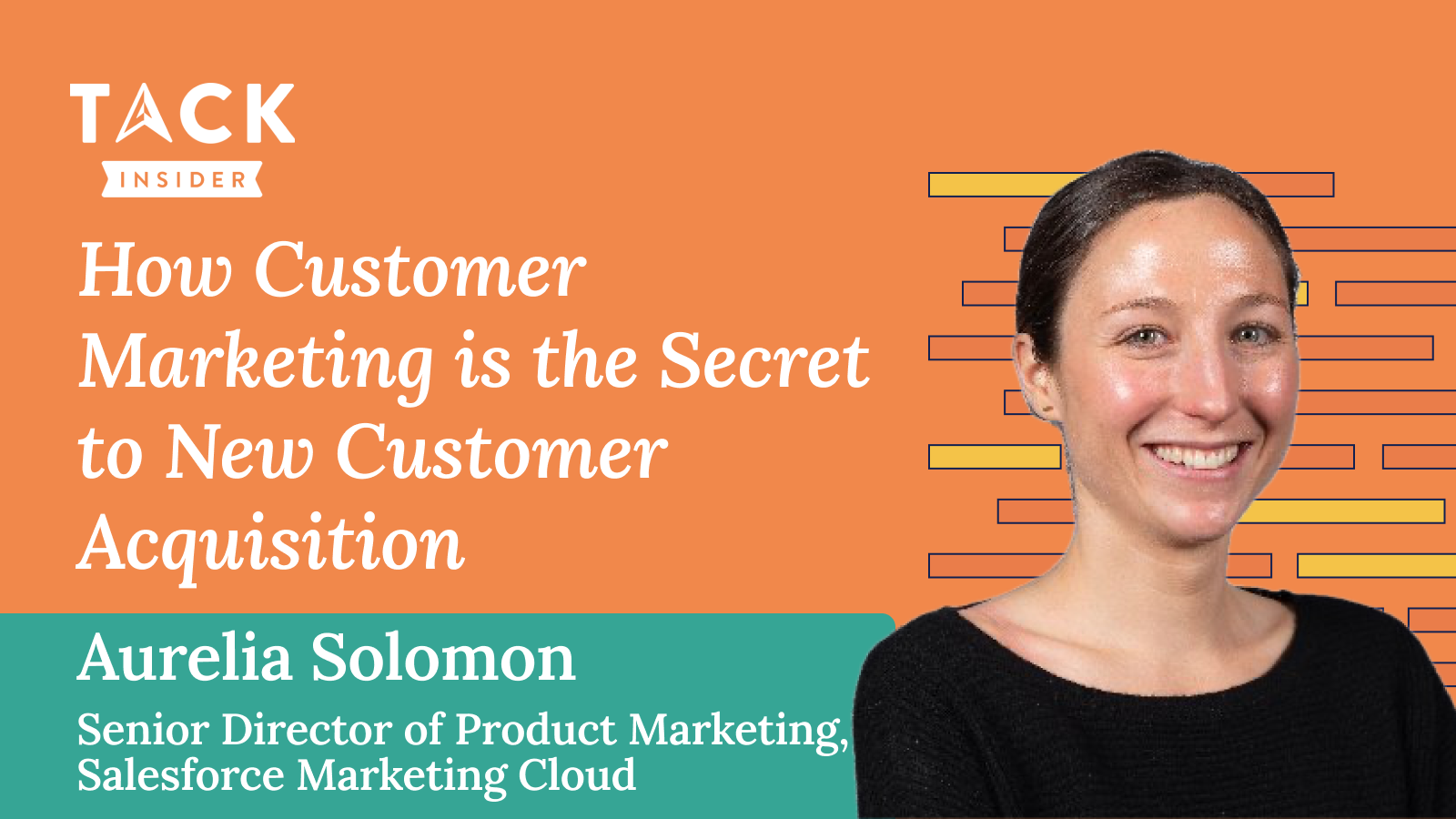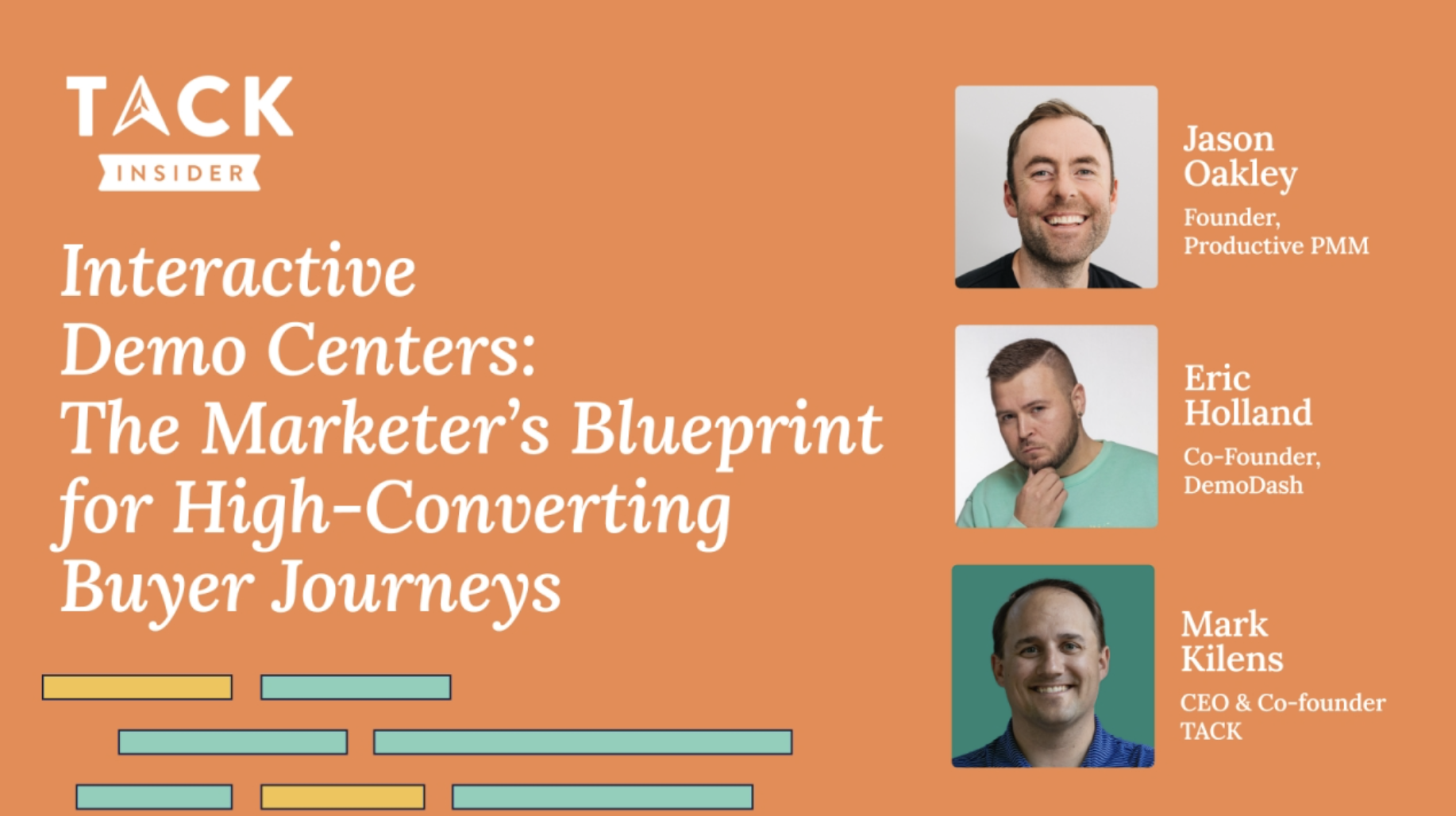Hosted by: Mark Kilens, Founder at TACK
Speakers: Aurelia Solomon, Head of Product, Brand, and Customer Marketing at Datagrail
Overview
Most teams see customer marketing as a post-sale effort, a retention play. But in this TACK Insider session, it was reframed as a front-of-funnel engine. When done right, customer marketing doesn’t just drive renewals, it sparks acquisition, increases conversion rates, and builds scalable trust.
Check out the full slides of the webinar
1. Rethink Product and Customer Marketing as One System
At its core, customer and product marketing both serve the same audience: your customer. The difference lies in timing and depth.
When integrated, these functions create a virtuous loop: customer insights drive product messaging, and customer success stories fuel acquisition. This alignment works best when teams:
- Center strategy around real customer usage data and feedback
- Use insights from both users and executive buyers to shape messaging
- Design campaigns that educate, not just promote
“Product marketing is the voice of the customer. Customer marketing is the echo that turns that voice into growth.”
2. Build on Five Pillars of Customer Marketing
Aurelia and Mark offered a five-part framework for modern customer-led growth:
-
Partnership – Understand customer roles (users vs. execs) and tailor engagement accordingly.
-
Value – Quantify how your product delivers outcomes and highlight that in messaging.
-
Customization – Go beyond personalization. Adapt your engagement model (events, content, feedback loops) to match their context.
-
Education – Teach customers how to maximize value through live trainings, best-practice guides, or usage benchmarks.
-
Support – Choose scalable support levels (one-to-one, one-to-few, or one-to-many) based on customer needs and segmentation.
3. Start Small: Crawl Before You Run
For teams new to customer marketing, Aurelia recommends a focused “crawl” approach:
- Identify your happiest or most engaged customers (via NPS, usage data, CS feedback)
- Speak directly with them to learn what’s working
- Turn those learnings into usable assets—think how-to content, case studies, or peer calls
- Use those assets as early proof points in the sales process
This is also the stage to build your first “maturity model”—a roadmap that shows how customer value scales as usage deepens.
4. Expand Relationships and Multithread
Once you have early wins, evolve from transactional support to strategic partnership. In the “walk” phase:
- Start customer advisory boards (CABs) with 10–15 executive champions
- Launch a voice-of-customer program to collect qualitative and quantitative insights
- Create marketing campaigns segmented by vertical, persona, or usage patterns
- Build 1:1 relationships across functions (e.g., both sales and CS leads at a single account)
Why? Because customer turnover is real. Relationships at the individual level make your growth stickier—and more human.
5. Scale Smart: Campaigns, Content, and Certification
By the “run” stage, your goal is orchestration: turning customers into your most credible sellers.
Here’s how:
-
Integrated revenue campaigns: Blend customer success into acquisition—like featuring customers in top-of-funnel webinars or events
-
Live training and education: Host product how-tos or industry panels where users teach users
-
Reference and referral programs: Track who speaks on your behalf, offer incentives, and tie it to pipeline
-
Certifications: Teach and credential customers on product use; great for brand trust and job mobility
-
Community and ecosystem engagement: Host user groups, facilitate peer Zooms, or show up where your customers already gather
Bonus: Measure the Right Metrics
Sophisticated customer marketing teams track beyond product usage:
- Cohort engagement by acquisition channel or segment
- Voice-of-customer themes and NPS trends
- Participation in events, content, and community
- Influence on pipeline (e.g., reference used → deal won)
- “Leading Indicators to Retention” (LIRs), like feature adoption or training attendance
Key Takeaways
- Customer marketing isn’t just about retention—it’s a growth engine.
- Crawl: Identify top users, capture feedback, and share learnings.
- Walk: Start CABs, run surveys, and multithread relationships.
- Run: Launch scalable content, references, and member-led events.
- Measure engagement, not just usage, to prove long-term impact.





